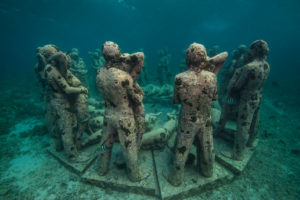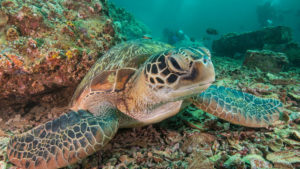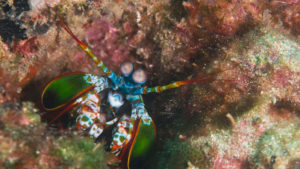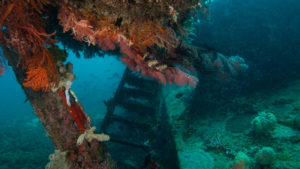Lombok and the Gili Islands are bouncing back from two devastating earthquakes that hit the islands in 2018, and local dive shops want the world to know. The second quake measured 6.9 in magnitude and was much larger than the first. Centered on Northern Lombok, the earthquake left over 320 people dead, 1,000 people injured and 270,000 homeless. Now, a few months later, life and tourism in the three main Gili Islands is trying to return to normal.
A group of Australian writers and underwater photographers arrived recently with the questions: what’s diving the Gili Islands like now? In fact, the diving pleasantly surprised us all.
Arriving in the Gilis
The Gili Islands are said to be one of the best turtle spotting destinations in the world. But would the turtles still be here?
We flew into Lombok from Denpasar, and took a short boat ride across to Gili Trawangan, locally called Gili T. (There is a ferry from Bali that takes about 90 minutes if you prefer).
Gili T is the largest of the three islands and home base for most of the dive centers and resorts. The laid-back style of the island is evident immediately as there are no cars and no major roads. The modes of transport are pony and cart, called ‘cidonos,’ foot, or bicycle.
As our main reason for being here was diving, we jumped at the earliest opportunity. The ocean here is generally mostly calm and a balmy 82 F (28 C). Visibility reaches up to 82 feet (25 m). The diving is varied, with muck/macro dive sites, deeper coral gardens, wrecks and a sculpture garden. The islands are very close to each other so can base yourself at one and dive all three.
Sculpture Garden

Just off Gili Meno is a site known for its turtle habitat and the hauntingly beautiful sculptures called Nest by artist and environmentalist Jason deCaires Taylor. The 48 life-sized figures stand in a circular formation emulating the circle of life, embracing each other, with some curled up on the ocean bed. The figures are made from pH neutral, environmental-grade concrete. The statues are meant to encourage reef growth, but they have become a huge tourist attraction for both snorkelers and divers.
Turtles

On the east side of Gili Meno is Turtle Heaven, the famous turtle site. This site definitely lived up to its name on our dive, with plenty of turtle action. We saw mostly large green turtles plus a few hawksbills just chilling out. There is also a house-style structure, home to a giant clam that the turtles use as a resting place. Drifting from the reef to finish the dive we also spotted nudibranchs, octopus, lionfish and, of course, more turtles.
Muck diving

We dived three muck/macro dives at Seahorse Bay, a sandy, sloping dive site, where we saw an abundance of small marine creatures. We spent over an hour on each dive, photographing seahorses, nudibranchs, frogfish, pipefish, clownfish and ribbon eels both blue and black.
Sharks
Shark Point, north of Gili T, also impressed. The visibility was fantastic and large gullies host colorful soft corals, reef fish, trevally and a large school of batfish. We also saw a few blacktip reef sharks in the distance and of course — more turtles.
Wrecks

There are a few wrecks in the area if you love rust and we dived The Bounty, a former cruise ship that lies off Gili Meno. It sank after a storm and sits on a sandy slope. Although it’s falling apart a bit, there is still plenty of fish life and hard- and soft-coral growth along with car tires and mooring lines.
Night diving
With a great muck dive still on our minds we decided to do a night dive at Hann’s Reef just off Gili Air. With a shallow, sandy bottom and sloping reef, mantis shrimp, nudibranchs, coral shrimp, clownfish, squid and a box crab eating a cone shell were all out on display.
After our last dive, we took the cidomos to the western side of the island. Going through the center of the island, we saw some earthquake damage here as the western side was the worst hit. The beachfront was quiet and some of the hotels are still undergoing reconstruction.
Bouncing back
The friendly locals of the Gili Islands are ready and waiting for tourism to return. There is a great choice of hotels, resorts or backpackers and plenty of dive operators. Everyone I spoke to has a sad story about relatives or friends losing houses or loved ones but they are rebuilding and waiting for people to start coming here again.
Images courtesy of Diveplanit unless otherwise credited

